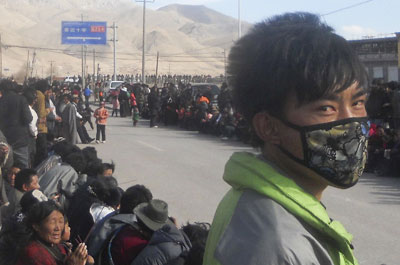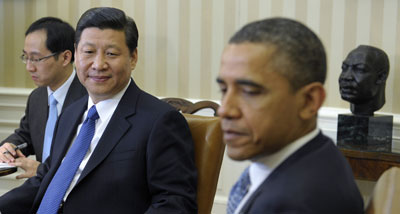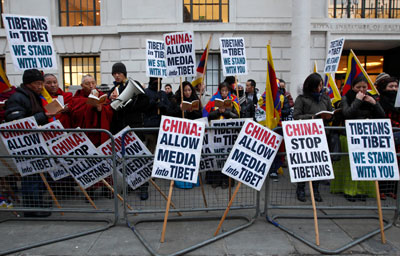
Ethnic violence renews information clampdown in China
Two months into 2012, all-too-familiar stories are emerging from China’s troubled minority regions, Tibet and Xinjiang. Following riots against Chinese rule in 2008 and 2009, violence and its corollaries–increased security and censorship–have become commonplace. Independent bloggers and journalists who cover the unrest pay a high price: Over half the 27 journalists documented by CPJ in…

Attacks on the Press in 2011: Abolishing Censorship
Even as trade and new systems of communication turn us into global citizens, the information we need to ensure accountability often stops at national borders. New platforms like social media are valuable tools, but the battle against censorship is hardly over. By Joel Simon

Attacks on the Press: China Holds Fast to Information Control
Internet users posed ever-bigger challenges to Beijing’s media controls, boosting debate on public safety and censorship. But ahead of a 2012 leadership transition, the Chinese Communist Party looks likely to fiercely suppress dissent. By Madeline Earp
Attacks on the Press in 2011: China
Authorities blocked reporting of unrest occurring around the world, from Inner Mongolia to the Occupy movement. More than half of the 27 journalists imprisoned on December 1 were from Tibet and Xinjiang, reflecting crackdowns after earlier unrest in minority regions. After online calls for Arab Spring-style demonstrations, dubbed the Jasmine revolution, CPJ documented the worst…
In China, journalists attacked while covering land dispute
New York, February 16, 2012–The Committee to Protect Journalists is disturbed by a series of violent attacks on international journalists that appear aimed at suppressing coverage of land-related protests in Panhe, in eastern China’s Zhejiang province.

Archaic media policies make China a poor partner
President Obama has promised to raise issues of human rights when he and his administration meet with Chinese Vice President Xi Jinping in the next day. After that, Xi, billed as China’s next leader, is expected to make some speeches, visit a few factories, stop at the Pentagon, sign some contracts that will strengthen economic…

In high-tech China, low-tech media control works too
China’s investment in high-tech Internet surveillance technology is well known, and the byzantine rules of its Central Propaganda Department have inspired books and academic treatises. But among the many tools in the box for media control, there’s one that’s very simple and low-tech: Keep journalists away.